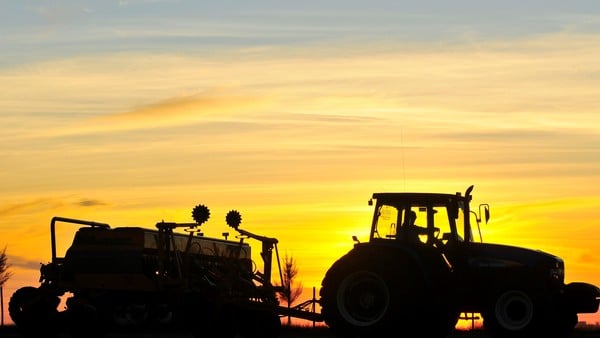Global Courant 2023-05-26 23:53:34
In some cases they were not enough to recharge water tables, but in many areas they arrived just in time to trigger seeding.
The Day of the Homeland came with an important gift for the entire Argentinian core agricultural zone, important rains that lasted until the closing of this edition and that triggered a new instance of decisions in the agricultural producers: is there time to modify the plan of fine crop planting?
Until a week ago, according to a survey of the Rosario Stock Exchange (BCR), wheat planting intentions in the core zone showed a 50 percent drop compared to last year’s planting. “The producer needs to sow but there is not enough water in the profiles. If April had met the average rainfall (120 mm) and May accompanied by forecasts of storms, it would be a projection of a record planting. But with only 30 percent of the rains in April, until last week the scenario for wheat planting was presented as the driest in the last 15 years,” the entity warned, and clarified that the rains forecast for the date homeland could give wheat a boost.
With a lot of precipitation and thunder still resounding on the horizon, Clarín Rural consulted some producers from different areas about their planting decisions.
“It seems to me that the rains are a bit late to modify planting plans,” said Santiago Zervino, a producer from the town of Cangallo, in south-central Buenos Aires.
This is the case of Alberto Mendiondo, producer of General Pinto, in the west of Buenos Aires. Although it rained between 65 and 85 on his field last week and another 10 mm on Friday, it is still below the needs of the crop to start. “We are not going to sow, there would be another 50 to 100 mm to go, the groundwater is 3 meters away, very far,” he explains.
Along the same lines, Manuel López Fresco, from General Viamonte, in the north of Buenos Aires, says that only 70 mm have fallen there so far and that he has already decided not to sow wheat. “We do not replace the water in napa, there was a lot of dry.”
Nearby, in Navarro, it rained 96 mm on Thursday night, adding to the 40 mm of previous days, and Augusto McCarthy continues with the idea of not planting. “There are many who with 20 mm will go out to sow and others not even with 200 mm”, he points out.
On the other hand, Matías Enrique Ferreccio, from the Roque Pérez-Saladillo area, comments that until a few days ago he came with a third of the surface without sufficient humidity, but that in the last hours he received 140 mm, which completed the needs. “Let’s sow,” he says. And Federico Beccar Varela, from Lobos, in the north of Buenos Aires, says that he was waiting for rains of at least 80/100 mm to be able to sow wheat. “It rained 180 in the last 10 days, so we are going to plant,” he says.
In the Diego Firpo field in the town of Canals, Córdoba, it only rained 10 mm in part of the field, for which the producer will cut back on his plans. “Of the 300 hectares programmed, we will only plant 65,” he details.
“We would already have to start planting and due to the weather we cannot. It has rained 95 mm so far this week”, comments Sebastián Marolda, from La Numancia, Tandil. Also in Tandil, Marcos Nazar is planning to plant more wheat and less barley “because of what is happening in the North and because the barley market is somewhat depressed.” “I have faith in wheat with a new government,” he says.
The exit poll is even: there are those who have already dropped their bet on cereal, there are many who will reduce the surface area compared to last year, but there are also many who keep intact their enthusiasm for a good wheat production that will help them leave behind the three years of drought.








